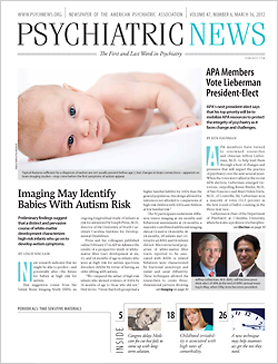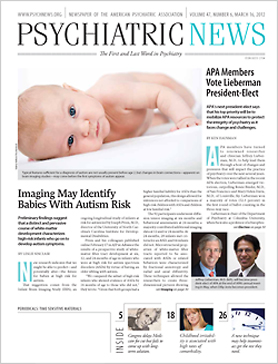State nonforensic psychiatric hospitals are increasingly populated by forensic patients, and the growth in this population appears to be largely attributable to an increased length of stay by patients found not guilty by reason of insanity.
There are various reasons for this trend, one of which is that society is afraid that if these individuals are released, they will commit more crimes.
But is that the case? Richard Miraglia, L.M.S.W., director and associate commissioner of the New York State Office of Mental Health, and Donna Hall, Ph.D., deputy director of the Division of Forensic Services there, conducted a study to find out.
The length of stay in state hospitals by not-guilty-by-reason-of-insanity acquittees had little effect on rearrest, they learned. They reported these results in the December 2011 Journal of the American Academy of Psychiatry and the Law.
“This is precisely the kind of study that we need more of, if we are to better understand how to manage [such] people,” Paul Appelbaum, M.D., a professor of psychiatry, medicine, and law at Columbia University and a past APA president, told Psychiatric News. “The authors are appropriately cautious about drawing conclusions from their data, and the findings are certainly not an argument for rapid discharge of everyone found [not guilty by reason of insanity]. But they do call into question the risk-averse approach that often governs management of this population, suggesting that many acquittees can be safely reintegrated into the community at a much more rapid pace.”
The study cohort included 386 individuals who had been found not guilty by reason of insanity and committed to a New York State forensic hospital on or after January 1, 1980, who had been eventually stepped down to a nonforensic psychiatric hospital, and who had been eventually released into the community no later than March 31, 2007.
Thirty-seven percent of the subjects had reentered the community during the 1980s, 39 percent during the 1990s, and the rest in 2000 or later. The researchers obtained clinical and court-related information about the subjects from the Mental Health Automated Record System and the Legally Oriented Forensic Tracking System maintained by the New York State Office of Mental Health and the New York State Division of Criminal Justice Services.
The researchers then assessed whether the length of the subjects’ hospitalization had any effect on their rearrest, after controlling for measures of psychiatric and criminal history.
The length of hospitalization had only a modest effect on rearrest and no effect on rearrest for violent crimes, the researchers found. Moreover, the modest link between the length of hospitalization and rearrest lost significance when the date of release was added into the equation. And neither a history of psychosis nor one of substance abuse predicted rearrest, whether for a violent or nonviolent crime.
In contrast, characteristics that influenced rearrest in this mentally ill population were similar to those that predict rearrest in the larger offender population—male gender, younger age, an antisocial personality diagnosis, and prior arrests.
The study also demonstrated that within two years of release, an estimated 2 percent of female subjects and 14 percent of male subjects found not guilty by reason of insanity were rearrested. In contrast, a study by another researcher of prison releases in 2002 in New York State showed that 42 percent of females and 56 percent of males were rearrested within two years of their release from prison. None of these prison subjects was deemed not guilty by reason of insanity.
The finding about rearrest rates “is perhaps the most important finding, even though it was not an explicit goal of this study,” Appelbaum commented. “Those acquittees [deemed not guilty by reason of insanity] are much less likely than people released from prisons to reoffend and especially to commit acts of violence.” Yet because policymakers, judges, prosecutors, and even some psychiatrists fear what such acquittees are going to do when released, the acquittees are often detained in the hospital longer than necessary, Appelbaum believes.
So how long should such individuals generally be hospitalized? “The one surprising finding was that individuals deemed not guilty by reason of insanity, as a group, seemed to gain maximum benefit from hospitalization after three or so years,” Miraglia said . “This finding has important implications with respect to resource allocation as well as the timing and delivery of treatment services designed to mitigate risk for reoffending. … [However] I don’t believe one can establish a fixed time or duration for confinement. … One needs to take into consideration the presence or absence of risk factors that drive recidivism and how treatment and/or community supervision has mitigated the risk for reoffending. I think the existing requirements for periodic court review to continue one’s commitment can provide adequate protection against indeterminate confinement.”
The study had no outside funding.



